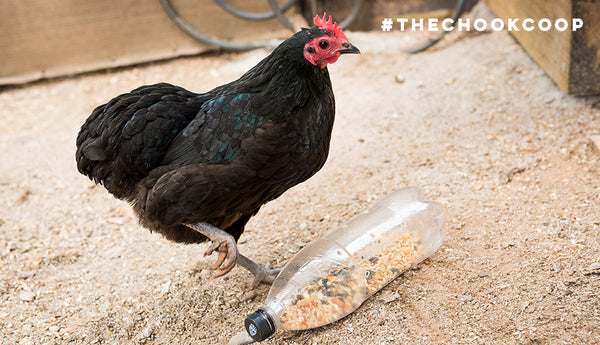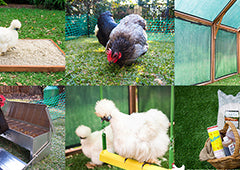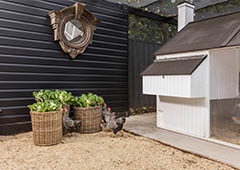Hello chicken keepers!
We all know active and healthy chickens are happy chickens. My flock keeps their minds and bodies active by foraging, scratching and playing with toys - some homemade and some ready-made! If your backyard chooks are confined to a run area the scope for exploration is a little restricted, but that doesn't mean your chickens can't have the best of times staying active and happy. We have a great article on busting boredom for your hens here, but today I want to talk about the Chicken Swing!
Chook swinging isn't just fun for your chickens, it gets you out into the coop and interacting with your ladies on a daily basis. Here are the top tips for getting your girls familiar with the Chicken Swing!
- Chicken Swing placement
Make sure there are no obstructions that will impede your swing’s motion. A sheltered area in the run or chook yard is best to avoid high winds. You can even set up your chicken swing in a brooder with baby chicks - place them on the swing a few times and they will quickly get the hang of it. The best place is just above the chick’s head height, then raise the height of the chicken swing as they grow bigger.
- Getting your chooks acquainted with the Chicken Swing
If you’re starting with adult chickens, set the swing about 10cm off the ground. Let your chickens peck and investigate the swing to familiarise themselves with their new plaything for at least 24 hours. After a few days, raise the chicken swing about 45cm above the ground. They may have the hang of it already or they may need a few incentives to grow comfortable with the chicken swing.
- Treats to get chooks swinging
You can use your most trusting chicken to show the flock how to get swinging. If you have a chook that will eat mealworm treats from your hand they are the prime candidate. Work for a few minutes every day getting your trusting chook to interact with you and the swing for treats and attention. The flock will catch on.
- Holding your hen
Pick up your trusting chook and reward her with a treat and relaxing coo-ing or chatting. Chickens are curious, smart and cautious - so don't be discouraged if they seem to avoid the swing at first. Spend time working on getting them used to being held by and placing them gently on their perches. Repetition is key so try this for a few minutes everyday for a week. This will not only lead to getting them accustomed to the chicken swing - it will also be helpful for health checks and any care and maintenance you need to perform.
- Placing your chook on the Chicken Swing
It’s time to get your chook comfortable on the swing. Make sure the chicken swing is hanging at a height just above their head.
- Have some mealworm treats on hand and pick up your trusting chook.
- Hold the perch of the chicken swing and set your chook on it.
- Let go of the perch and your chook.
- Immediately give your chicken a treat.
Repeat this practice until your chooks are happy and comfortable with the chicken swing. Don’t add any movement to the swing just yet as this can startle them and undo all your hard work. Take your time and use your treats!
- That chook is ready to swing
Once your chickens have grown comfortable enough to perch on the chicken swing it’s time to get moving! Put your chook on the swing perch and gently pull back on the swing a little bit. Give them a treat when they swing and if they jump off simply place them back on try again. If they get stressed, stop and try again another day.
- Swinging chickens
Just like humans learn to swing using their legs and arms, a chicken can learn how to swing using their weight distribution. While your chook is moving on the swing you can get them to reach just a little further for a treat with every swing. Hold your hand just out of reach and reward their efforts with a treat. Once they are working for it, you don’t need to give them a treat with every swing - they should be having fun by now! At this stage you may have already seen your chooks jump up and wing on their own. If not, persist with the training. Every chook is different and takes to different things at different rates.
Ready to get swinging? Check out the Chicken Swing here. Looking for more ideas on how to get your chooks active? This is the place.
After some more cheeky chook action? Join our communities on Facebook, Instagram, Twitter and Pinterest!
Feathers Forever,
Kassandra x



















